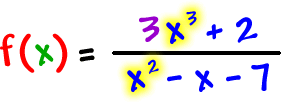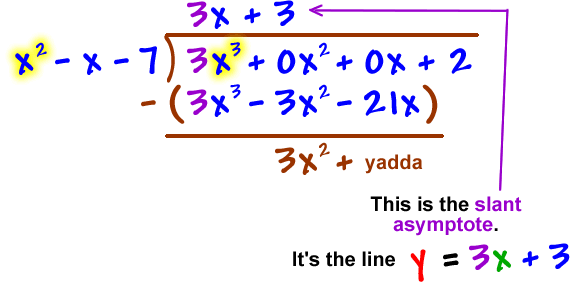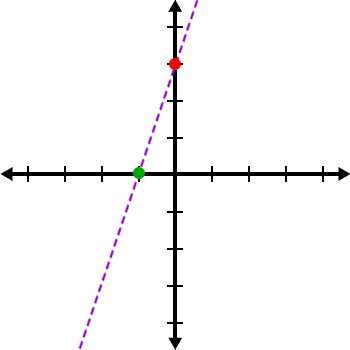What about this one?
| Find the horizontal asymptote of |
|
| Look at |
 |
So the horizontal asymptote is the line
![]()
(which is the x-axis)
|
This one falls under part |
|
on our list. |
YOUR TURN:
| Find the horizontal asymptote of |
|
OK, so what about this one?

| If we look at |
 |
, we find
that the
|
| But, there's going to be some x stuff left over to deal with. This is when you need to start in with some long division... and we get to ignore the remainder! | ||

You can stop here since the rest will be remainder stuff.

TRY IT:
| Find the slant asymptote of |
 |

